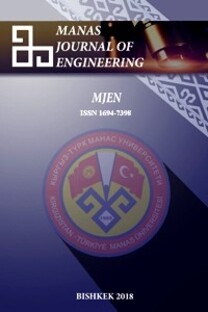Deep Learning Method for Handwriting Recognition
Character recognition, convolutional neural network, deep learning handwriting recognition, image processing,
___
- B. Engel-Yeger, L. Nagauker-Yanuv, and S. Rosenblum, “Handwriting performance, self-reports, and perceived self-efficacy among children with dysgraphia,” American Journal of Occupational Therapy, vol. 63, no. 2, pp. 182-192, 2009.
- R. Plamondon, and S. N. Srihari, “Online and off-line handwriting recognition: a comprehensive survey,” IEEE Transactions on pattern analysis and machine intelligence, vol. 22, no. 1, pp. 63-84, 2000.
- S. N. Srihari, “High-performance reading machines,” Proceedings of the IEEE, vol. 80, no. 7, pp. 1120-1132, 1992.
- G. Seni, R. K. Srihari, and N. Nasrabadi, “Large vocabulary recognition of on-line handwritten cursive words,” IEEE Transactions on pattern analysis and machine intelligence, vol. 18, no. 7, pp. 757-762, 1996.
- P. P. Roy, A. K. Bhunia, A. Das et al., “Keyword spotting in doctor's handwriting on medical prescriptions,” Expert Systems with Applications, vol. 76, pp. 113-128, 2017.
- S. N. Srihari, S.-H. Cha, H. Arora et al., “Handwriting identification: Research to study validity of individuality of handwriting and develop computer-assisted procedures for comparing handwriting,” Technical Report CEDAR-TR-01-1, 2001.
- M. I. Fanany, "Handwriting recognition on form document using convolutional neural network and support vector machines (CNN-SVM)." pp. 1-6.
- D. Mahapatra, C. Choudhury, and R. K. Karsh, "Handwritten Character Recognition Using KNN and SVM Based Classifier over Feature Vector from Autoencoder." pp. 304-317.
- P. Saha, and A. Jaiswal, "Handwriting Recognition Using Active Contour," Artificial Intelligence and Evolutionary Computations in Engineering Systems, pp. 505-514: Springer, 2020.
- S. A. Gregory Cohen, Jonathan Tapson, and Andre van Schaik, “EMNIST: an extension of MNIST to handwritten letters,” 2017.
- B. Baykal, T. Ö. Aktaş, and O. Yildiz, "Makİne Öğrenmesİ yÖntemlerİ İle tomatİk ÇevrİmdiŞi İmza tanima ve doğrulama Sistemİ." pp. 1-5.
- B. Sun, L. Yang, W. Zhang et al., "Demonstration of Applications in Computer Vision and NLP on Ultra Power-Efficient CNN Domain Specific Accelerator with 9.3 TOPS/Watt." pp. 611-611.
- L. Akhtyamova, A. Ignatov, and J. Cardiff, "A Large-scale CNN ensemble for medication safety analysis." pp. 247-253.
- M. Cho, J. Ha, C. Park et al., “Combinatorial feature embedding based on CNN and LSTM for biomedical named entity recognition,” Journal of Biomedical Informatics, vol. 103, pp. 103381, 2020.
- A. Momeni, M. Thibault, and O. Gevaert, "Dropout-enabled ensemble learning for multi-scale biomedical data." pp. 407-415.
- M. Amin-Naji, A. Aghagolzadeh, and M. Ezoji, “Ensemble of CNN for multi-focus image fusion,” Information fusion, vol. 51, pp. 201-214, 2019.
- C. Tian, Y. Xu, and W. Zuo, “Image denoising using deep CNN with batch renormalization,” Neural Networks, vol. 121, pp. 461-473, 2020.
- Z. Mushtaq, S.-F. Su, and Q.-V. Tran, “Spectral images based environmental sound classification using CNN with meaningful data augmentation,” Applied Acoustics, vol. 172, pp. 107581, 2020.
- Y. Su, K. Zhang, J. Wang et al., “Environment sound classification using a two-stream CNN based on decision-level fusion,” Sensors, vol. 19, no. 7, pp. 1733, 2019.
- T. Ergin, “Convolutional Neural Network (ConvNet yada CNN) nedir, nasıl çalışır? ,” 2018,October
- ISSN: 1694-7398
- Yayın Aralığı: 2
- Başlangıç: 2001
- Yayıncı: KIRGIZİSTAN-TÜRKİYE MANAS ÜNİVERSİTESİ
Ayşe AYVACI, Abdullah Erdal TÜMER
Potential geoheritage assessment; Dereiçi travertines, Başkale, Van (east anatolian Turkey)
Yavuz Selim Taspinar, Ilkay Cinar, Murat Koklu
On some inequalities for derivatives of algebraic polynomials in unbounded regions with angles
Deep neural networks based wrist print region segmentation and classification
Hasan Erdinç Koçer, Kerim Kürşat Çevik
Cohomology of semi-invariant submanifolds of cosymplectic manifolds
One Step Ahead Prediction of Ozone Concentration for Determination of Outdoor Air Quality Level
